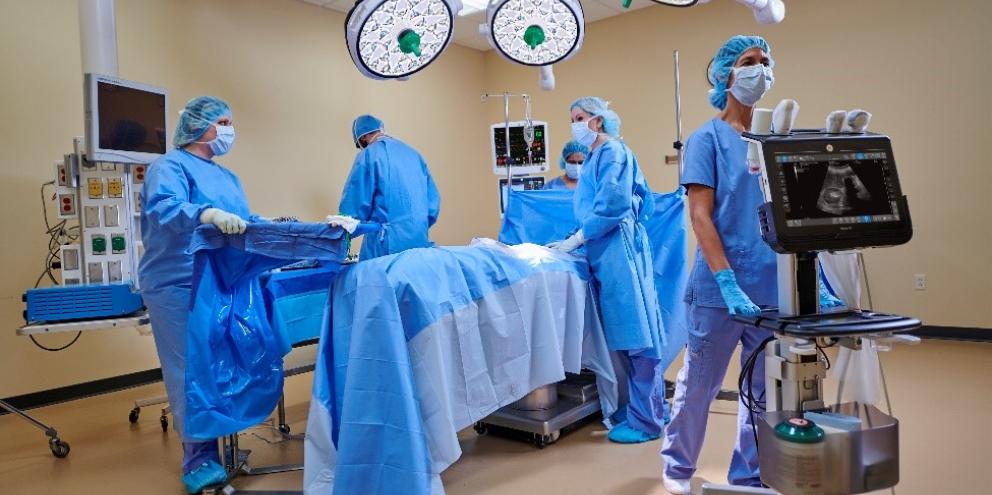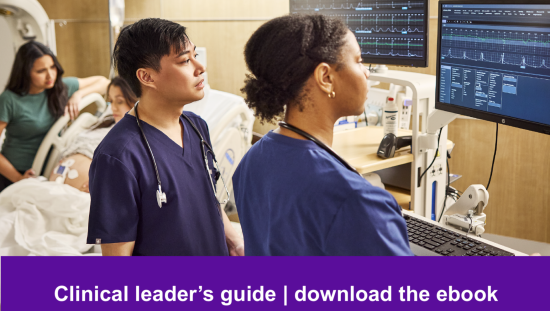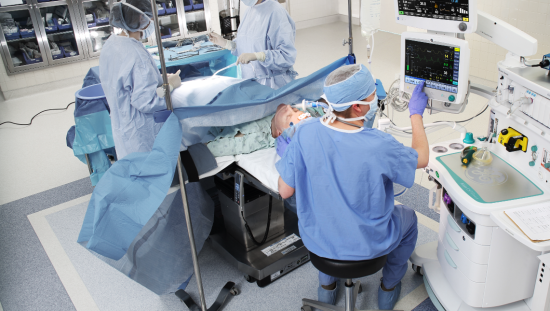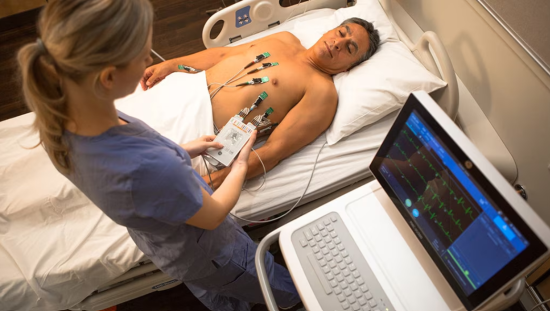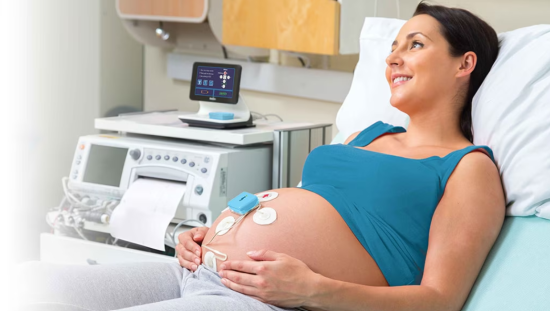Introduction
Anesthesia providers play a significant role in supporting patient safety throughout the surgical journey. One of the most important aspects of this role is protecting the lungs during surgery, as ventilation strategies can influence recovery and overall outcomes. Intraoperative lung protective ventilation (LPV) is a key approach to help address the risk of postoperative pulmonary complications (PPCs) and promote improved outcomes.
Building on Part 1 of this series, which explored low-flow anesthesia*, this article focuses on LPV strategies and their potential to protect the lung from injury during intraoperative mechanical ventilation.
The benefits of lung protective ventilation
While lung protective ventilation strategies have been well-established in the ICU for some time now, the need for LPV strategies in perioperative settings has more recently taken root.
For purposes of this article, we define LPV as “creating the right balance of volume and pressure to achieve ventilation and gas exchange with minimal harm. If there’s too much pressure or volume, lung injury can occur.”[1]**
LPV strategies may help improve clinical outcomes by avoiding PPCs. PPCs vary by type of surgery but can occur in as many as 33% of patients.[2] Patients with 1 PPC or more experience significantly increased intensive care unit admission, length of stay, and early postoperative mortality.[2]
But because mechanical ventilation has the potential to aggravate and precipitate lung injury,[3] anesthesia providers may ensure they avoid injury with the right LPV strategies.
Lung protective ventilation strategies: 3 core components
An international panel of experts in the British Journal of Anaesthesia in December 2019 explained that using “a low-tidal-volume protective-ventilation strategy (6–8 ml/kg PBW), appropriate positive end-expiratory pressure (PEEP), and recruitment maneuvers may improve intraoperative respiratory function and prevent PPCs.”[4]
In fact, protecting against lung collapse while limiting driving pressure, tidal volume, and delivering an appropriate level of PEEP are all essential,[5] for preventing lung injury in perioperative settings.[6]
- Low tidal volume: “A low tidal volume strategy has become the standard of care for patients with ARDS,” according to AHRQ.[7] Further research has shown that anesthesiologists who practice lower tidal volumes in patients without ARDS help reduce the risk of developing ARDS, PPCs, and mortality compared to those using higher tidal volumes.[8]
- PEEP: A study in the Journal of Anesthesia concludes that appropriate PEEP “is necessary to maintain lung function if low tidal volume ventilation is used.”[9] Without appropriate PEEP, lung capacity can decline as much as 37%.[9] PEEP, on the other hand, has been proven to increase lung capacity, reduce collapse, and maintain proper oxygenation.[9]
- Driving pressure: A multivariate analysis published in Lancet Respiratory Medicine comparing low PEEP against high PEEP during low tidal volume ventilation found that “an increase in the level of PEEP that resulted in an increase in driving pressure” was associated with more PPCs.[10] Thus, limiting driving pressure is associated with fewer pulmonary complications,[11] and anesthesia providers can reduce driving pressure with recruitment maneuvers.[12]
Improving patient safety, care quality, and OR efficiency
Lung protective ventilation strategies may help ensure surgical procedures are completed on schedule and delays are reduced. Both have the potential to increase operational efficiency but must also be balanced with a commitment to safety and quality.
Reducing PPC leads to shorter hospital stays, improves patients’ quality of life, and avoids new hospital admissions.[13] All of which drive economic advantages that include reducing expenses associated with longer hospital stays, equipment costs, medications, and lost staff productivity.[14]
Automation technology as a catalyst for LPV strategies
Ideal Body Weight
GE HealthCare’s Aisys™ CS2 anesthesia delivery system supports lung protective ventilation by automating two traditionally manual and labor-intensive functions. With Aisys CS2, clinicians simply input the patient’s ideal body weight, and the system automatically calculates and proposes initial tidal volume and respiratory rate settings to help clinicians quickly implement LPV strategies.
Lung Recruitment
Aisys CS2 also streamlines the lung recruitment maneuver. After clinicians select a PEEP level, the ventilator automatically performs the recruitment maneuver, captures lung compliance, incrementally increases the PEEP, and captures measurements at each step. This automation provides clinicians with robust insights into lung compliance at different PEEP levels, supporting informed and data-driven ventilation decisions.
Turning Insight into Action
As anesthesia providers continue to play a pivotal role in improving perioperative outcomes, implementing lung protective ventilation strategies may be an important step toward reducing postoperative pulmonary complications and enhancing patient safety. With the support of technologies like GE HealthCare’s Aisys CS2, clinicians can easily adopt evidence-based practices that balance efficiency with clinical excellence.
To explore practical guidance on applying LPV strategies throughout the perioperative journey, visit our Lung Protective Ventilation Forum, featuring
- Current LPV Evidence
- LPV During Induction of Anesthesia
- LPV During Maintenance
- LPV During Emergence
Sources:
[1] Tidal volume, PEEP, and recruitment maneuvers: 3 components of lung protective ventilation, GE HealthCare
https://clinicalview.gehealthcare.com/article/tidal-volume-peep-and-recruitment-maneuvers-3-components-lung-protective-ventilation
[2] Postoperative pulmonary complications, early mortality, and hospital stay following noncardiothoracic surgery, JAMA Surgery
https://jamanetwork.com/journals/jamasurgery/fullarticle/257733
[3] Ventilator-induced lung injury and multiple system organ failure: a critical review of facts and hypotheses, Intensive Care Medicine
https://link.springer.com/article/10.1007/s00134-004-2363-9
[4] Lung protective ventilation for the surgical patient: international expert panel-based consensus recommendations, British Journal of Anaesthesia
https://www.bjanaesthesia.org/article/S0007-0912(19)30647-6/fulltext
[5] Evolving concepts for safer ventilation, Critical Care
https://ccforum.biomedcentral.com/articles/10.1186/s13054-019-2406-9
[6] Protective ventilation from ICU to operating room: state of art and new horizons, Korean Journal of Anesthesiology
https://ekja.org/journal/view.php?doi=10.4097/kja.19499
[7] Low-tidal volume ventilation: introduction, evidence, and implementation: a facilitator’s guide, Agency for Healthcare Research and Quality
https://www.ahrq.gov/hai/tools/mvp/modules/technical/ltvv-intro-fac-guide.html#
[8] Association between use of lung protective ventilation with lower tidal volumes and clinical outcomes among patients with acute respiratory distress syndrome: a meta analysis, JAMA Network
https://jamanetwork.com/journals/jama/fullarticle/1386591
[9] Impact of changes of positive end-expiratory pressure on functional residual capacity at low tidal volume ventilation during general anesthesia, Journal of Anesthesia
https://link.springer.com/article/10.1007/s00540-012-1411-9
[10] Association between driving pressure and development of postoperative pulmonary complications in patients undergoing mechanical ventilation for general anesthesia, Lancet Respiratory Medicine
https://www.thelancet.com/journals/lanres/article/PIIS2213-2600(16)00057-6/references#
[11] Lung Protection Ventilation Forum (part 3): LPV during anesthesia maintenance, GE HealthCare
https://clinicalview.gehealthcare.com/webinar/lpv-forum-part-3-lpv-during-anesthesia-maintenance
[12] Recruitment maneuvers and higher PEEP, the so-called Open Lung Concept, in patients with ARDS, Critical Care
https://ccforum.biomedcentral.com/articles/10.1186/s13054-019-2365-1#
[13] Perioperative physiotherapy, Multidisciplinary Respiratory Medicine
[APSF history] APSF history, Anesthesia Patient Safety Foundation, https://www.apsf.org/about-apsf/apsf-history/
[14] Evidence-based practice interventions for reducing postoperative pulmonary complications: a narrative review, Open Respiratory Medicine Journal https://openrespiratorymedicinejournal.com/VOLUME/17/ELOCATOR/e18743064271499/FULLTEXT/
*Refer to the anesthetic agent labeling for information regarding indications for use, warnings, and other relevant clinical information specific to that anesthetic agent. Any decisions regarding selection of anesthetic agent and flow rate should be made at the discretion of the clinician and in their medical judgment based on available information.
**Nothing in this material should be used to diagnose or treat any disease or condition. Readers must consult a healthcare professional.
GE is a trademark of General Electric Company used under trademark license. Aisys and Carestation are trademarks of GE HealthCare.
JB34669XX

